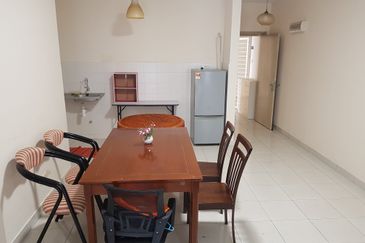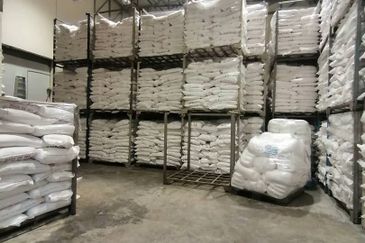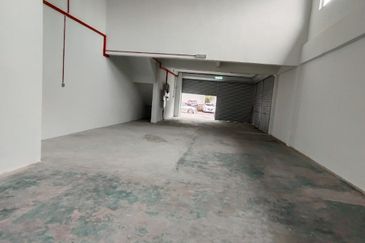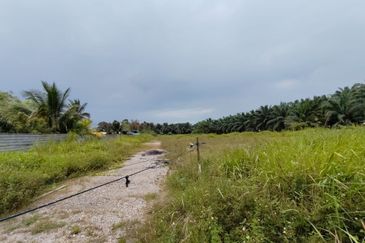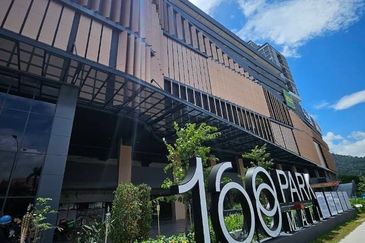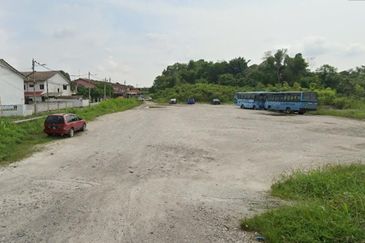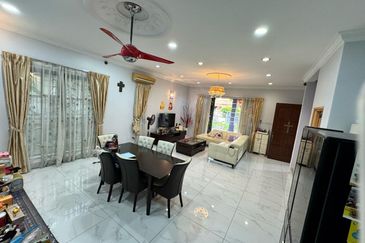
- There is a need to consider the relocation of regulations with regard to building manager and building management from the MOF to KPKT; so as to restore a balanced property industry ecosystem, where each individual stakeholder strives to look for ways to collaborate and leverage the power as a whole, in such a way to create a constantly evolving relationship not only to survive but to thrive.
The changing property landscape and the importance of property management
Malaysia’s real estate is closely related to its economic trends, housing policies and demographic changes. Over the past decades, as Malaysia undergoes a major transformation from an economy largely dependent on agriculture and commodities to a more robust industrial and service-oriented economy, the country’s major cities are also experiencing a rapid proliferation of high-rise developments, with new residential, commercial and mixed-use towers reshaping the urban skyline.
The reasons to embrace tall building typography are multi-faceted, as they reflect the shifting dynamics of urbanisation, rising population, rural-urban migration, soaring house and land prices, urban regeneration, etc. Especially in densely populated urban areas like the Klang Valley, where horizontal expansion is often impractical; building upwards is not only a response to the population boom and scarcity of land in urban areas, but also an adaptation to evolving urban lifestyles. The trend of “going vertical” will continue to gain traction in the Klang Valley, as can be seen from the changes in the regional property landscape, where the ratio of landed to high-rise were 55:45 in 2002, but 40:60 in 2024 (Figure 1).
Figure 1: Existing stocks of landed and high-rise properties in Klang Valley
A strata property is a scheme where the building or land is divided up into individual lots, and comes with common property. A strata title allows individual ownership of part of a property (called a “lot” and generally an apartment or townhouse), combined with shared ownership in the remainder (called “common property” e.g. foyers, driveways, gardens, etc) through a legal entity called the owners’ corporation. Strata development is vital in helping a high-density city to be more dynamic in terms of offering a modern and convenient urban lifestyle.
Over the years, strata development recorded a steady increase. According to the Commissioner of Buildings (COB) under the Ministry of Housing and Local Government (KPKT), there are a total of 1,589,183 strata units in Peninsular Malaysia as at December 2020. In Kuala Lumpur alone, there are currently 5,500 strata schemes comprising more than 750,000 units.
As stratified housing rises in prominence, people begin to realise there is a need for effective property management to provide high-quality urban living experience. This is because proper handling and maintenance of residential high-rises are crucial to ensuring the buildings’ continued functionality and the satisfaction of their occupants in the long run. Furthermore, there is a growing recognition that effective property management is able to increase the long-term investment value of the property. A completed building can remain in place for many years. But, if it is not managed and maintained properly, the building will deteriorate quickly, thereby undoing all the efforts in the design and construction of the building.
Realising that property management is a key factor impacting both the operation of buildings and property values, the profession is regulated under the Valuers, Appraisers, Estate Agents and Property Managers Act (VAEP) or Act 242 in short; and the Board of Valuers, Appraisers, Estate Agents and Property Managers (BOVAEP) is established to oversee and control the activities of practising property managers in the country, as well as strengthen professional integrity and ethics.
Incompetency in property management
However, challenges still persist in this profession, particularly concerning the incompetency of property managers in addressing various building maintenance issues that have negatively impacted high-rise residents’ satisfaction level. Most of the time, complaints are found through social media about the failure of property managers in delivering mundane maintenance works such as cyclical repairing, rewiring, servicing of mechanical and electrical equipment, repair or replacement of defective parts of the building, etc.
Some may blame the root cause of such incompetence to the non-compliance of industry players to regulations and standards, where there are many who carry out property management activities and services but are not registered under BOVAEP.
However, the professionalism level of the registered ones is also questioned by many. This is because BOVAEP allows “registered valuers” to practise property management even when they do not possess the appropriate qualifications and experience in building maintenance. Most often, these “valuers-cum-property managers” lack experience in dealing with regulations related to building maintenance, and rely heavily on contractors or site supervisors for routine building maintenance.
The fact is, there is a clear distinction in the nature and extent of responsibilities between a valuer and a property manager. The duties of a valuer primarily revolve around property valuation, whereas a property manager’s role encompasses tasks such as managing and maintaining the functionality of a building, financial and administrative oversight, and facilities management, among other functions. The stark imbalance in supply and demand for property managers caused by the rapid increase of stratified housing stocks is likely to increase the number of inexperienced and incompetent property managers practising in the industry.
More importantly, it was never the intention of the Parliament to include property management as one of the functions of valuers when the Valuers, Appraisers, Estate Agents Act (VAVE) was implemented in 1981. Instead, the Strata Management Act (SMA) (Act 757) is a very specific and clear piece of legislation that deals with the maintenance and management of stratified properties.
Since Act 757 did not have laws that provide regulatory control over property managers, while the then Board of Valuers, Appraisers, and Estate Agents (BOVAE) already had its own guidelines regarding property management standards, and it required unnecessary costs for the government to set up another “board” to cater to property managers; the amendment of Act 242 to cover the profession of property management was deemed to give assurance to property tenants and owners that they were dealing with genuine property managers that were under the purview of the Ministry of Finance (MOF).
Unfortunately, such amendment has raised concerns and criticisms from industry players, as building management — currently under the purview of the KPKT — which has to do with the organisation, management and maintenance of buildings, is a completely different discipline from property valuation, or even property management, which is a term that is often misunderstood by many and is being used interchangeably with building management.
Deflecting the common industry practice
In common industry practice, the owner or joint management body/management corporation (JMB/MC) in a stratified building engages a managing agent, who is normally an engineer or a person that possesses the engineering background to deal with the day-to-day maintenance and management of the common areas, facilities and services in a building. This managing agent is also tasked to attend to complaints and queries from owners, visitors and tenants, as well as to advise on various administrative and operational issues of the building. This managing agent is regulated under Act 757, and most, if not all of them, are practising as building managers.
On the other hand, a property manager is supposed to refer to as a person, a firm or a company that, on behalf of the owner of any land, building and any interest therein, manages and controls such properties to maintain or increase their investment value or physical worth. Under the amended VAEP, “property management” means management and control of any land, building, and any interest in the land or building, excluding the management of property-based businesses, on behalf of the owner for a fee, whereas its practices include:
1. enforcing the terms of leases and other agreements pertaining to the property;
2. preparing budgets and maintaining the financial records for the property;
3. monitoring outgoings for the property and making payments out of the income from the property;
4. advising on sale, purchase and letting decisions;
5. advising on insurance matters;
6. advising on the opportunities for the realisation of development or investment potential of the property;
7. advising on the necessity for upgrading the property or for the merging of interests;
8. managing and maintaining the building and facilities attached to the building; and
9. making or checking of inventories of furniture, fixtures, trade stocks, plant or machinery, or other effects.
Apparently, a building manager coordinates the maintenance and upkeep of the common property, while a property manager acts as a middleman between a tenant and his/her landlord. Though in most casual conversations these two terms are similar enough; the actual role and responsibility of a property manager and a building manager are very much different in nature from each other, and should not be mixed up and confused. More importantly, based on the Attorney General Chambers’ interpretation during consultations on the amendment of Act 242:
“In the event a person is appointed by the JMB or MC as a person or agent who is responsible for the maintenance and management of the common property pursuant to paragraphs 21(2)(f) and 59(2)(f) of Act 757, or is appointed by the COB as a Managing Agent pursuant to subsection 86(1) of Act 757, then the said person or agent does not commit an offence pursuant to Section 30 of Act 242 because he is acting under Act 757, and is not acting under Act 242.”
Sad to say, the amendment that incorporated in VAEP does not make the distinction between a property manager and a building manager; yet, the inclusion of the designation Managing Agent under section 22J(1) Act 242 has resulted in the forced service of the “valuer-cum-property manager”, where only a valuer registered under Act 242 can practise as a property manager as well as a building manager.
This “forced service” has not only deprived those “non-valuer building managers” of their right to use the designation Managing Agent, but has further restricted them from undertaking building maintenance and management of the common property; though the “non-valuer building managers” are pioneers in their field and have been managing stratified properties for many years. This is, indeed, an usurp of KPKT’s powers and is contrary to Act 757.
To note, most, if not all strata buildings, especially those low- and medium-cost housing, are commonly managed and maintained by non-valuer building managers, who are engaged by the JMB/MC through competitive bids. These non-valuer building managers are in charge of the day-to-day operations of the building, from safety, security, cleanliness, to mechanical and electrical (M&E) installations, which are way more cost-effective than the fixed scale-based valuer-cum-property managers. Notably, the scale fee for a valuer-cum-property manager is a minimum 7.5% of gross annual rent or RM50 per unit per month, whichever is higher. This is definitely a significant additional cost burden to the JMB/MC that has to be met via an increase in the maintenance fee.
Though a one-year window period was offered, from Jan 1 to Dec 31, 2018 to the practising non-valuer building managers with property management experience or qualification to register themselves as licensed property managers following the amendment of Act 242, many obstacles had been placed in the registration exercise to frustrate the applicants, including the objection to the request made by the then KPKT minister for the extension of the time-window for non-valuer Building Managers to register with BOVAEP. As reported by EdgeProp on Oct 12, 2019, only one-third of unlicensed property managers managed to undergo the registration.
Those who were accepted for registration, however, discovered belatedly in their approval letters that the “registered property manager“ will be required to practise via a “registered valuers firm,” and no freelancing is allowed. This effectively means that all practising building managers can only be employed by “registered valuers firms”, which is definitely a monopoly in the profession of property management.
The need to establish a Board of Building Managers
Building management is a multi-disciplinary management function encompassing general operations and maintenance, engineering, safety, security and health, financial and credit control, leasing and tenancies; which is seen to be increasingly technology-driven by computerisation, building automation, energy management, security and safety control and surveillance apart from the mundane maintenance, etc. Realising that what stratified property owners need is a competent building manager, not a valuer-cum-property manager, the profession and contributions of a building manager should be rightly recognised.
As reported by the Building Management Association of Malaysia (BMAM), there are currently an estimated 30,000 practitioners managing buildings, and the number is growing in tandem with the growth of both non-subdivided and sub-divided (stratified) buildings. Hence, it is imperative to establish a Board of Building Managers (BOBM) to improve the regulatory function and professionalism in the building management industry, as well as to provide life-long learning and up-skilling of building managers through continued education and professional courses.
Since all buildings, from the conception, planning, construction, certification for completion and continuing control and licensing for health and safety are under the regulatory authority of KPKT, it is appropriate and logical for the proposed BOBM be established under the auspices of KPKT.
More importantly, there is a need to consider the relocation of regulations with regard to building manager and building management from the MOF to KPKT; so as to restore a balanced property industry ecosystem, where each individual stakeholder strives to look for ways to collaborate and leverage the power as a whole, in such a way to create a constantly evolving relationship not only to survive but to thrive.
This is in line with the Madani concept, which is an integrated and holistic effort to make all policies and implementations in Malaysia more humane while emphasising on:
“Willingness to accept change, taking into account the suggestions of all levels of society with the desire for recovery through substantive reforms for the sake of a more advanced and prosperous Malaysia”.
Dr Foo Chee Hung is the principal researcher of MKH Bhd.
The views expressed are the writer’s and do not necessarily reflect EdgeProp’s.
Looking to buy a home? Sign up for EdgeProp START and get exclusive rewards and vouchers for ANY home purchase in Malaysia (primary or subsale)!
TOP PICKS BY EDGEPROP

Danau Permai Condominium
Taman Desa, Kuala Lumpur

Sri Petaling KL First Floor Shop For Rent
Bandar Baru Sri Petaling, Kuala Lumpur

Kawasan Perindustrian Nilai
Nilai, Negeri Sembilan
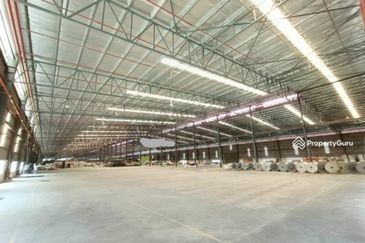
Kawasan Perindustrian Nilai 3
Nilai, Negeri Sembilan
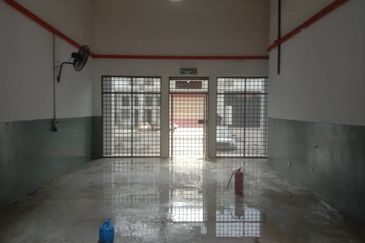
Taman Perindustrian Bukit Serdang
Seri Kembangan, Selangor
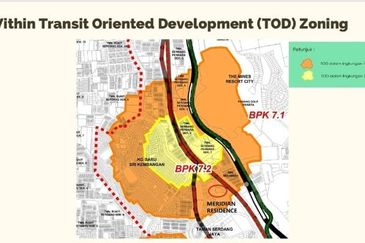
Kampung Baru Seri Kembangan
Seri Kembangan, Selangor



